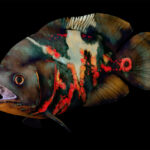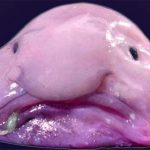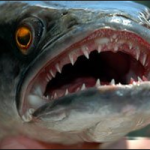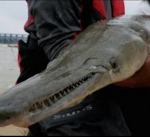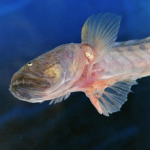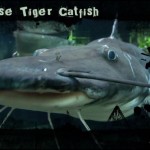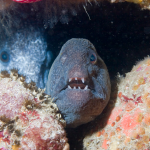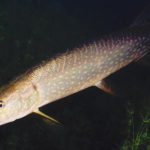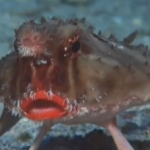Class Actinopterygii - Ray-finned Fishes
The most diverse group of fish
The ray-finned fishes (actinopterygians) are the largest group of living fishes and compose half of the living vertebrates. There are around 42 orders, 431 families and nearly 24,000 species. Almost all fish that you see belong to this class of fish. The most notable exceptions include lampreys, hagfish, lungfish, and coelocanths.
Ray-finned fish have several physical characteristics worth mentioning. The following is a general description of the characters of the class Actinopterygii, Ray finned fishes.
Ray-finned Fish Scales
There is no one type of fish scale that all actinopterygians share. Ancestral actinopterigians generally had heavy and complex scales known as ganoid scales. Today, surviving ray finned fishes generally have more flexible scales with reduced weight known as leptoid scales. It is believed that the lighter scales, while providing less protection allowed the fish to avoid predators and find food easier, thus increasing fitness.
Ganoid Scales: These scales are extremely heavy and inflexible. The inner layer of the scale is made of lamellar bone. They were common in ancestral actinopterygians. They can however be seen today in primitive fish like gars, bichirs, and reedfishes have ganoid scales.
Leptoid Scales: As leptoid scales grow they add concentric rings to the scale. They are arranged so that they overlap head to tail, much like the roofing shingles. This allows the fish to swim with less water resistance. There are two basic types of leptoid scales. Cycloid scales have a smooth outher edge (found in salmon and carp). Ctenooid scales have a toothed or rough outer edge (found in bass, crappie, etc).
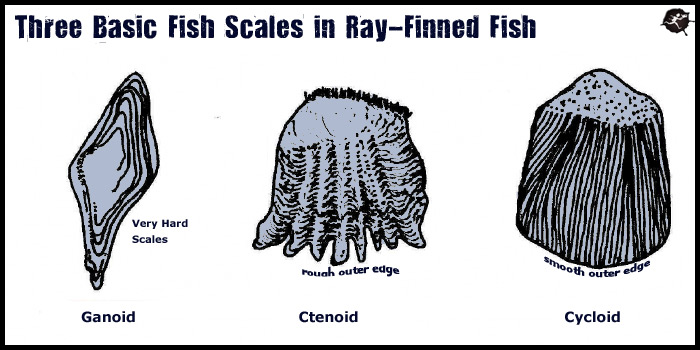
Branchiostegal Rays
The branchiostegal rays are a series of long, curved (often pointed) bones that support the gill membrane (sometimes refered to as the branchiostegal membrane).
In ray-finned fishes, the branchiostegal rays evolved from the bones at the base of the branchial cavity. These rays increased the efficiency that water was pumped across the gills. The interopercular bones, which were formed by the modification of branchiostegal rays at the bottom of each gill cover, further improved the pumping efficiency by enlarging the opercular cavity, thus increasing the volume of water that could flow though the gills.
Ray-finned Fish Swim Bladders
The swim bladder in ray-finned fish most likely served as a type of primitive lung in early actinopterygians. However, in more derived fishes in the group, it serves almost entirely as a buoyancy device. Fish with swim bladders can control the amount of gas in the bladder and thus control their buoyancy. This ability made it so that the fins were no longer needed to function as hydroplanes and could evolve into devices for greater maneuverability.
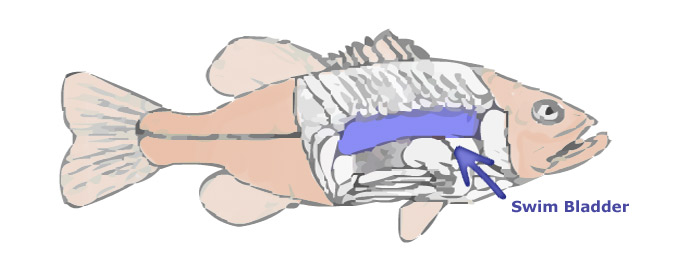
In some fish, like the beta fish (also known as the Siamese fighting fish) and gouramis, the air bladder actually works somewhat like the lungs in mammals. These fish can gulp air into the swim bladders and pull oxygen from it. For more info see (Helfman, Collete, and Facey 1997) (Liem 1998) (Moyle and Cech 2004)
Ray-finned Fish Jaws
Ray-finned fish have a wide diversity of jaws. The general evolutionary trend in the group is towards more flexibility. In particular, the two major bones of the upper jaw, the maxilla and the premaxilla, were previously firmly attached to the skull and had teeth. In the most derived actinopterygians, there are fewer attachments of these bones and teeth are rarely present. This increased flexibility has allowed to the upper jaw to extend and protrude so as to permit a variety of feeding specializations. The most dramatic example of this occurs in African cichlids. Slingjaw wrasse also represent an amazing of jaw protrusion. Other adaptations, like filter feeding plankton are a result of this new specialization.
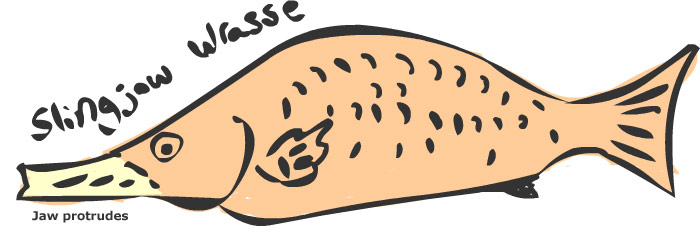
The only major drawback to this jaw flexibility is that food processing could not happen as easily at the rim of the mouth. Fish with protrusible jaws now often have a second set of jaws in the throat known as pharyngeal jaws. This second set of jaws allow the outer jaws to continue feeding.
Ray-finned Fish Tails
The tails in most ray-finned fishes are what is known as homocercal – the upper and lower lobes of the tail are the same length. In other groups, like the the sharks, the upper lobe of the tail is often longer than the lower. There is relatively little need for this type of tail however, because modern ray-finned fishes have neutral buoyancy. Sharks often sink if they don’t swim so the shape of their tail helps them greatly. There is a big advantage to have a tail that is homocercal. They can precisely control their movement as they swim.
Classification
Ray finned fishes can be divided up into two basic groups, Chondrosteins and Neopterygiians. Chondrostians are generally considered to be primitive fish, such as sturgeons, paddlefish, bichirs and reedfishes. Neopterygians are divided between Holosteins (gars and bowfins) and Teleost fish (the rest). The following is a list of ray-finned fish orders. Classification follows that of FishBase.
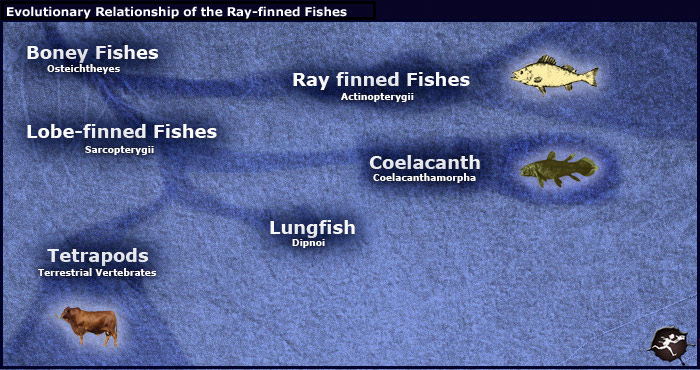
- Polypteriformes (Bichirs, Reedfishes)
- Acipenseriformes (Sturgeons, Paddlefish)
- Lepisosteiformes (Gars)
- Amiiformes (Bowfin)
- Osteoglossiformes (bony-tongued fishes)
- Hiodontiformes (mooneye, goldeneye …)
- Elopiformes (ladyfishes, tarpon … )
- Albuliformes (bonefishes)
- Notacanthiformes (halosaurs, spiny eels)
- Anguilliformes (true eels, gulpers)
- Saccopharygiformes (gulper eels)
- Clupeiformes (herrings, anchovies)
- Gonorynchiformes (milkfish, beaked salmon …)
- Cypriniformes (barbs, carp, danios …)
- Characiformes (characins, pencilfishes …)
- Gymnotiformes (electric eels, knifefishes)
- Siluriformes (catfishes)
- Argentiniformes (barreleyes, slickheads)
- Salmoniformes (salmon, trout)
- Esociformes (Pike)
- Osmeriformes (smelts, galaxiids)
- Ateleopodiformes (jellynose fish)
- Stomiiformes (bristlemouths, marine hatchetfishes)
- Aulopiformes (lancetfishes, Bombay duck)
- Myctophiformes (lanternfishes)
- Lampriformes (oarfish, opay, ribbonfishes)
- Polymixiiformes (beardfishes)
- Percopsiformes (cavefishes, trout-perches)
- Batrachoidiformes (toadfishes)
- Lophiiformes (anglerfishes)
- Gadiformes (cods)
- Ophidiiformes (pearlfishes)
- Mugiliformes (mullets)
- Atheriniformes (silversides, rainbowfishes)
- Beloniformes (flyingfishes, halfbeaks, needlefishes)
- Cetomimiformes (whale-fishes)
- Cyprinodontiformes (livebearers, killifishes)
- Stephanoberyciformes (ridgeheads)
- Beryciformes (fangtooths, pineconefishes)
- Zeiformes (dories)
- Gobiesociformes (clingfishes)
- Gasterosteiformes (sticklebacks)
- Syngnathiformes (seahorses and pipefishes)
- Synbranchiformes (swamp eels)
- Tetraodontiformes (filefishes and pufferfish)
- Pleuronectiformes (flatfishes)
- Scorpaeniformes (scorpionfishes, sculpins)
- Perciformes (all the other fish … )

